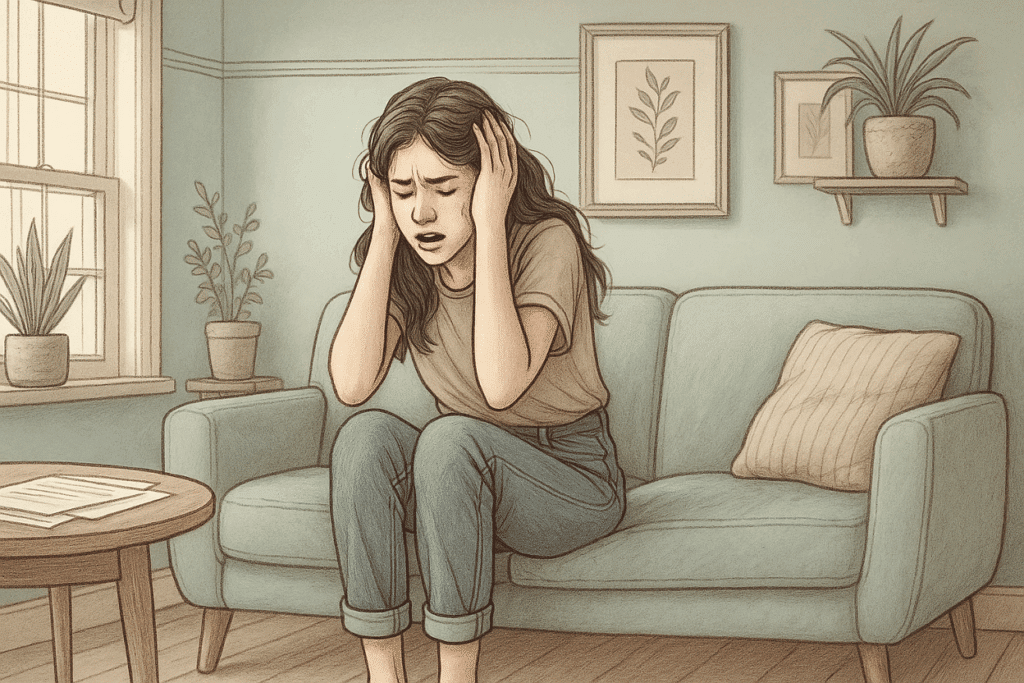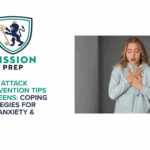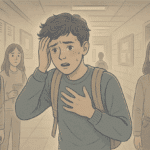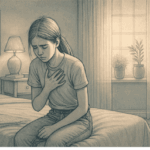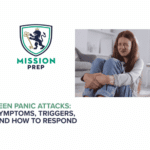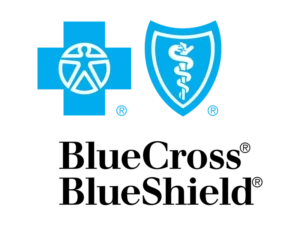Key Takeaways
- Panic attacks in teens are triggered by multiple factors including hormonal changes, academic pressure, and social media stress.
- Physical symptoms of panic attacks include racing heart, chest pain, shortness of breath, and dizziness.
- Simple techniques like controlled breathing and grounding exercises can help teens manage panic attacks in the moment.
- Professional support is crucial when panic attacks become recurrent or significantly impact a teen’s daily functioning.
- At Mission Prep Healthcare, we specialize in comprehensive teen panic disorder treatment through residential programs, individual therapy, group support, and family involvement to help teens develop lasting coping skills.
Teen Panic Attacks Explained
Panic attacks are intense episodes of fear that trigger severe physical reactions when there’s no real danger present. For teens already managing the emotional rollercoaster of adolescence, these episodes can be particularly distressing and confusing.
How Common Are They?
Panic attacks are more common in adolescents than many people realize. Research indicates that 3–5% of teens experience panic attacks, with girls being more frequently affected than boys. What’s particularly concerning is that many teens suffer in silence, either too embarrassed to seek help or unable to articulate what they’re experiencing.
Why Teens Are Vulnerable
The teenage brain is still developing, particularly the prefrontal cortex responsible for rational thinking and emotional regulation. This developmental stage, combined with hormonal fluctuations and increasing social and academic pressures, creates the perfect storm for panic attacks to occur.
Mission Prep Healthcare specializes in mental health treatment for teens aged 12-17, offering residential and outpatient programs for anxiety, depression, trauma, and mood disorders. Our therapies include CBT, DBT, EMDR, and TMS, tailored to each adolescent’s needs.
With a structured, supportive environment, we integrate academic support and family involvement to promote lasting recovery. Our goal is to help teens build resilience and regain confidence in their future.
Physical Triggers of Panic Attacks
Hormonal Changes
The adolescent years bring dramatic hormonal shifts that affect everything from mood to stress responses. For many teens, these hormonal fluctuations can trigger or worsen anxiety symptoms, including panic attacks.
Girls may notice that panic symptoms intensify during certain phases of their menstrual cycle when estrogen and progesterone levels change significantly. Boys experience testosterone surges that can influence mood stability and stress responses. Many teens find their panic attacks follow predictable patterns aligned with hormonal changes.
Sleep Deprivation
Teens need 8–10 hours of sleep nightly, yet most get far less. This chronic sleep deficit isn’t just making them cranky, it’s making them vulnerable to anxiety and panic.
Sleep deprivation decreases the brain’s ability to regulate emotions and increases sensitivity to stress triggers. When the body is exhausted, even minor stressors can trigger the fight-or-flight response that characterizes panic attacks.
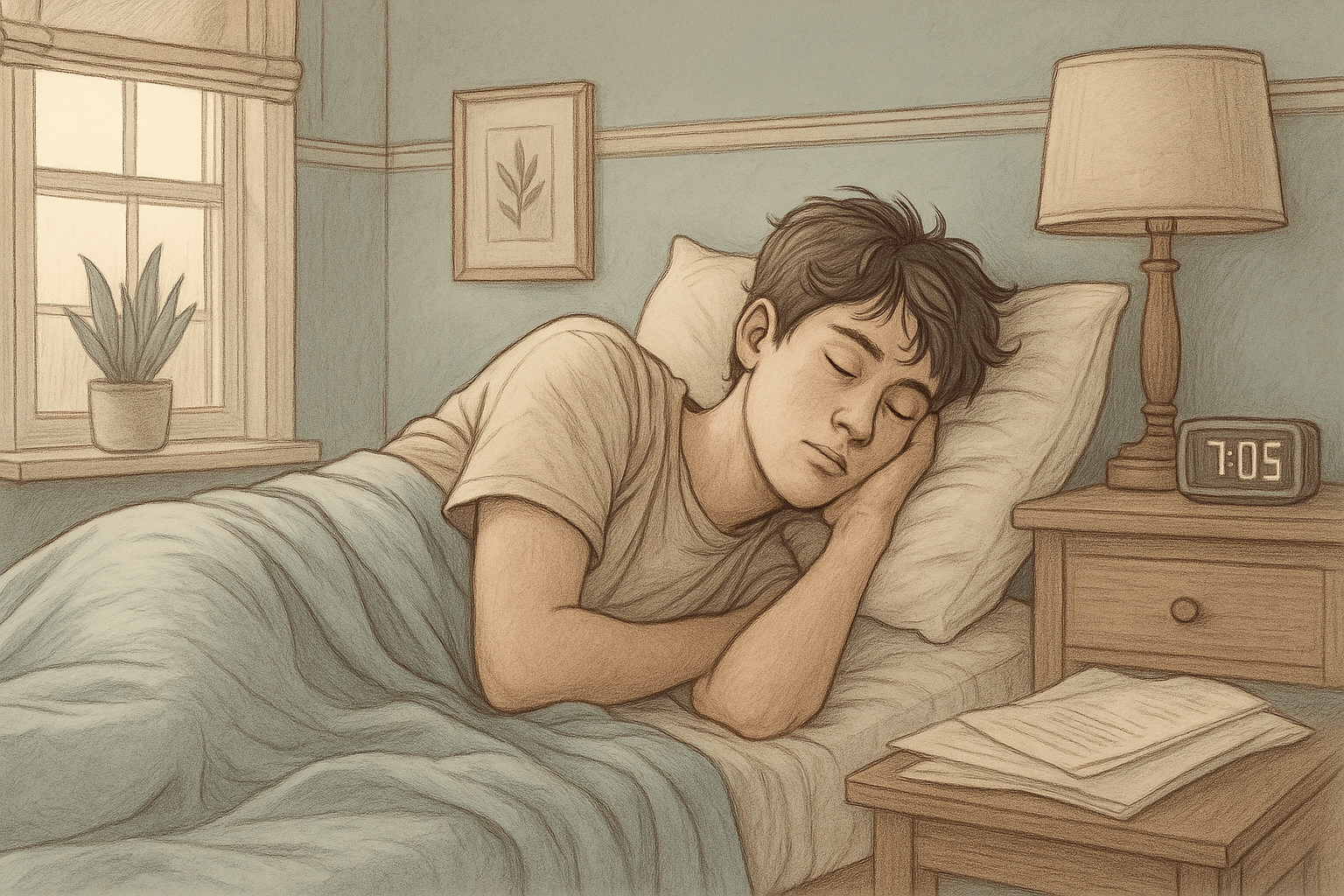
Establishing a consistent sleep schedule and creating a calm bedtime routine can be as effective as other interventions in reducing panic frequency.
Caffeine & Stimulants
That morning coffee or energy drink might be worsening your teen’s anxiety more than you realize. Caffeine, nicotine, and other stimulants directly activate the sympathetic nervous system, the same system that kicks into high gear during panic attacks.
These substances can increase heart rate, cause jitteriness, and create physical sensations that mimic and trigger panic.
Medical Conditions
Sometimes what appears to be anxiety-based panic attacks may actually stem from underlying medical conditions. Thyroid disorders, cardiac arrhythmias, asthma, and vestibular problems can all produce symptoms that mimic panic attacks.
We recommend a thorough medical evaluation to rule out physical causes before focusing exclusively on psychological treatments.
Emotional Causes of Panic Attacks
Academic Pressure
Today’s teens face unprecedented academic expectations. The pressure to maintain perfect grades, participate in multiple extracurricular activities, and build an impressive college application creates a constant state of stress for many adolescents.
The fear of failure and concerns about future prospects can create a perfect storm of anxiety that manifests as panic attacks.
Social Anxiety
Teenage years bring heightened social awareness and increased concern about peer acceptance. For many teens, the fear of negative evaluation becomes overwhelming.
Social situations like class presentations, parties, or even walking through the school cafeteria can trigger intense anxiety and panic attacks.
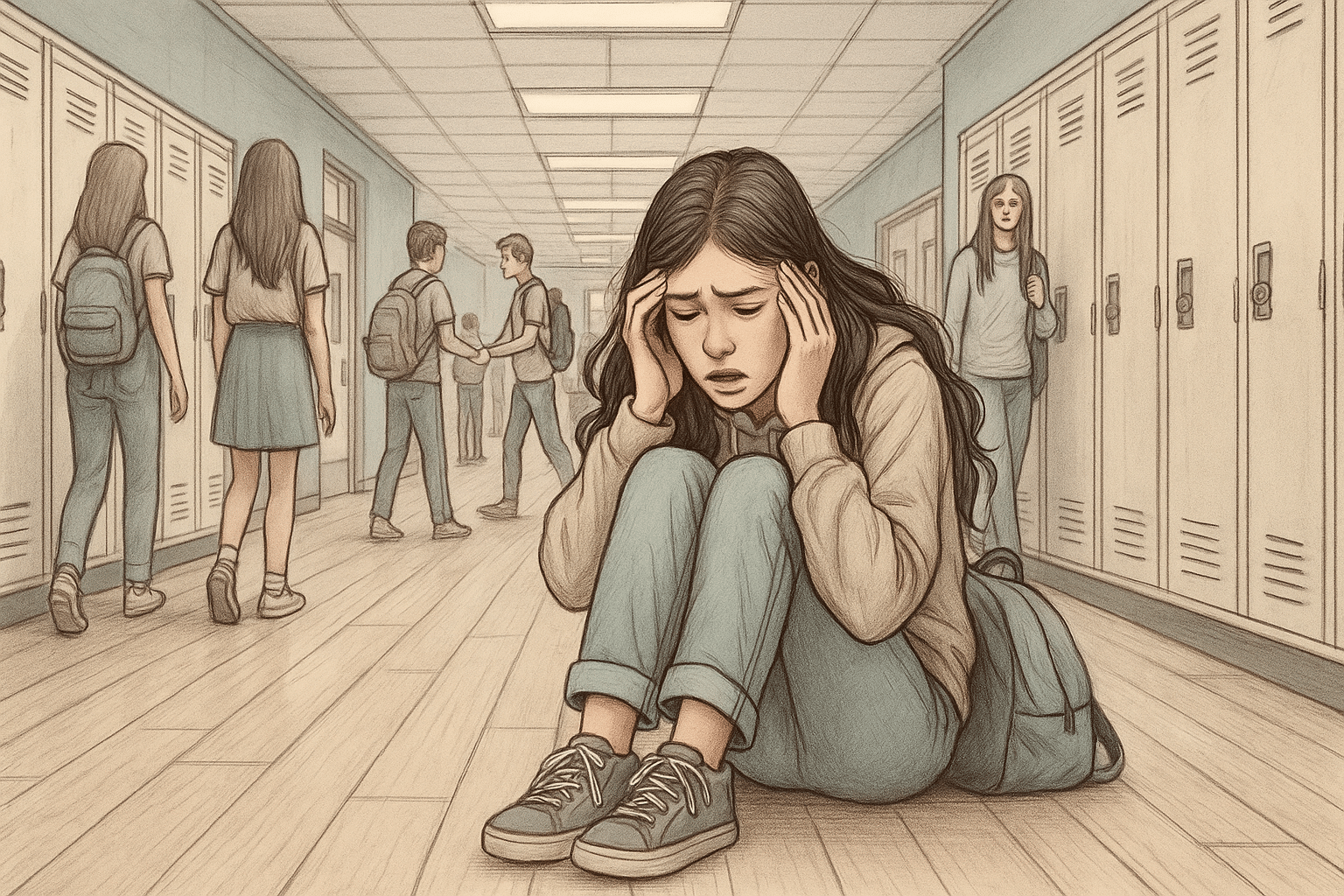
Numerous teens panic attacks occur primarily in social contexts.
These episodes often involve fears of embarrassment, humiliation, or rejection, reflecting deeper concerns about social belonging that are particularly acute during adolescence.
Family Conflict
Persistent family conflict, parental marital problems, or high-pressure family expectations can create a chronic stress response that lowers the threshold for panic attacks.
Even loving families with good intentions can sometimes create pressure cookers of expectation that contribute to anxiety. A home environment where emotions can be expressed safely and mistakes are treated as learning opportunities can significantly reduce panic vulnerability.
Perfectionism
The relentless pursuit of perfection creates fertile ground for panic attacks. Perfectionistic teens often set impossibly high standards, engage in harsh self-criticism, and catastrophize minor setbacks. This mindset keeps the nervous system in a constant state of vigilance and stress.
When perfectionism drives your child’s behavior, normal adolescent challenges like getting a B on a test or making a mistake during a performance can trigger overwhelming shame and anxiety that escalates into panic.
Other Digital Triggers
Social Media Stress
Social media platforms create unprecedented pressure to present a perfect image while constantly comparing oneself to others. The curated highlight reels they consume daily can create feelings of inadequacy and anxiety about their own life and appearance.
For vulnerable teens, social media doesn’t just reflect social anxiety, it actively amplifies it.
Cyberbullying
The 24/7 nature of digital communication means that bullying no longer stops when a teen leaves school. Cyberbullying can follow adolescents everywhere through their devices, creating a sense that there’s no escape from the harassment.
This persistent threat also activates the stress response system continuously leading to panic.
Information Overload
Constant exposure to troubling news, global crises, and apocalyptic predictions creates background anxiety for many teens. Their developing brains haven’t yet built the filters and perspective to process this information overload in context.
The result can be a pervasive sense of threat that lowers the threshold for panic attacks.
Emergency Response to Panic Attacks
Breathing Techniques
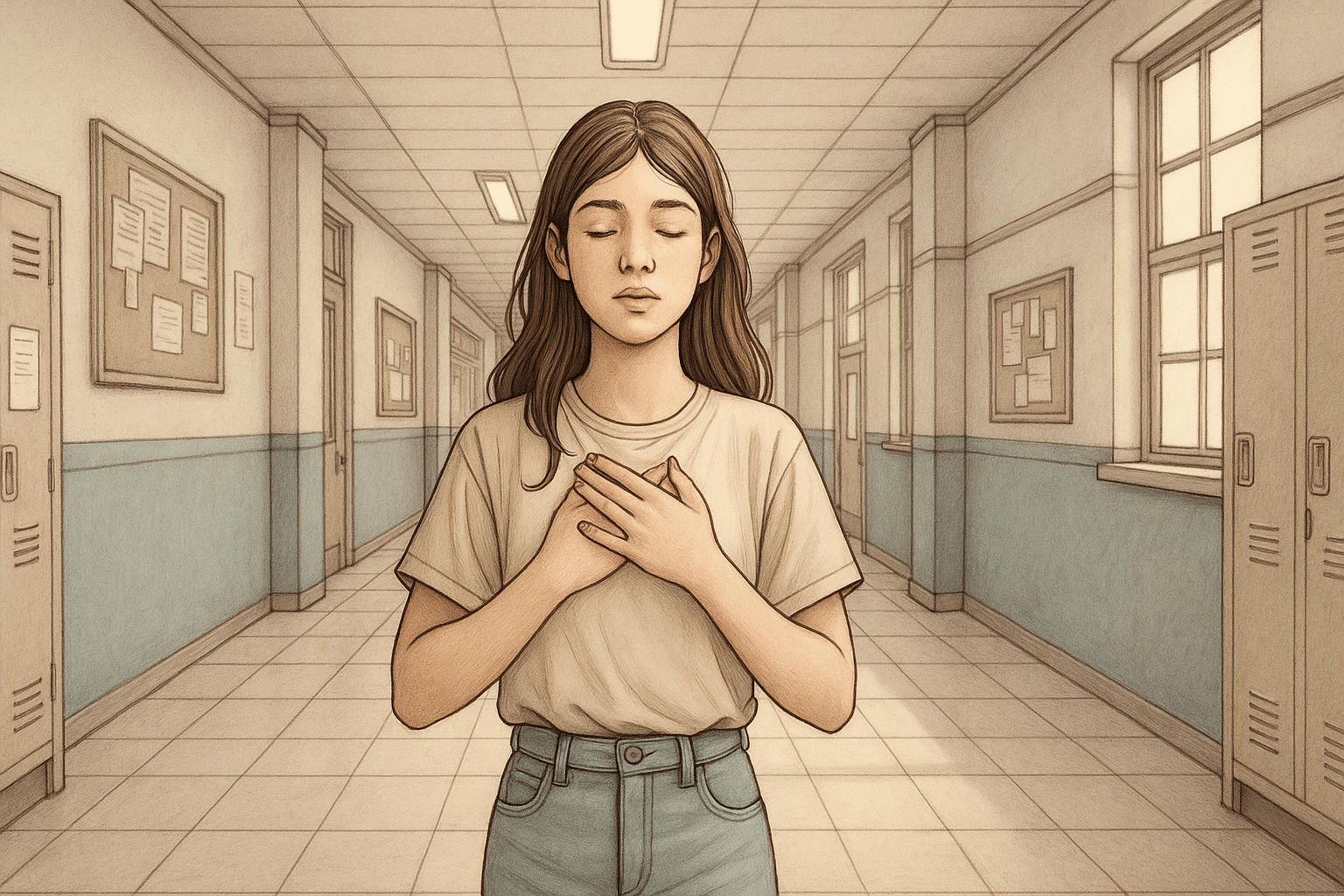
Controlled breathing is one of the most effective tools for managing panic attacks in the moment.
The 4-7-8 technique works well for many teens: inhale for 4 counts, hold for 7 counts, and exhale slowly for 8 counts. This pattern activates the parasympathetic nervous system, counteracting the fight-or-flight response driving the panic.
5-4-3-2-1 Method
The 5-4-3-2-1 grounding technique is particularly effective for teens experiencing panic attacks. When panic strikes, they should identify five things they can see, four things they can touch, three things they can hear, two things they can smell, and one thing they can taste.
This exercise shifts attention away from panic sensations and toward the immediate environment, helping to break the cycle of fear.
When to Get Help
While occasional panic attacks might not require professional intervention, certain warning signs indicate that specialized help is needed. Seek professional support if your teenage child experiences recurrent panic attacks, develop fear of having another attack (anticipatory anxiety), begin avoiding situations due to fear of panic, or if panic symptoms significantly interfere with daily functioning, sleep, or social life.
Panic attacks that occur more than twice a month, cause a teen to miss school, avoid normal activities, or experience persistent worry are signals that professional support is needed.
Long-Term Solutions
Therapy Options
Cognitive Behavioral Therapy (CBT) has the strongest evidence base for treating panic in adolescents. This approach helps teens identify and challenge the catastrophic thoughts that fuel panic (“I’m going to die,” “I’m losing control”) while gradually facing feared sensations and situations.
Acceptance and Commitment Therapy (ACT) is another effective approach that teaches teens to accept anxious feelings without struggling against them while committing to actions that align with their values. This paradoxical approach of accepting uncomfortable feelings rather than fighting them often leads to decreased panic symptoms over time.
Lifestyle Changes
Regular physical activity is one of the most powerful anti-anxiety interventions available. Exercise burns off excess stress hormones, increases feel-good endorphins, improves sleep quality, and builds confidence, all factors that reduce vulnerability to panic.
Find a physical activity your teenage child genuinely enjoys rather than those that feel like punishment. Whether it’s dance, basketball, hiking, or martial arts, movement that brings joy provides the greatest mental health benefits.
Building Support Systems
Panic attacks often lead to isolation, yet social connection is one of the most powerful buffers against anxiety. We encourage teens to identify trusted friends and family members who can provide understanding and support.
Having even one person who knows about their panic attacks and responds with compassion rather than judgment can make a tremendous difference.
Find Hope and Healing at Mission Prep
At Mission Prep Healthcare, we specialize in providing comprehensive residential treatment for teens struggling with panic disorder and anxiety. Our evidence-based approach combines individual therapy, group support, family involvement, and 24/7 professional care in a safe, nurturing environment designed specifically for adolescents.
We understand that every teen’s experience with panic attacks is unique, which is why we create personalized treatment plans that address individual triggers and develop practical coping skills.

Our residential programs offer teens the opportunity to focus entirely on their recovery without the daily stressors that often contribute to panic attacks.
Through therapies like CBT, exposure therapy, and peer support groups, teens learn to understand their anxiety, challenge negative thought patterns, and develop confidence in managing difficult emotions.
With proper treatment and support, the vast majority of teens show significant improvement and go on to live fulfilling lives free from the grip of panic disorder.
Frequently Asked Questions (FAQ)
Can panic attacks cause physical damage?
Despite how frightening they feel, panic attacks do not cause physical damage to the body. The racing heart, chest pain, and shortness of breath experienced during panic attacks, while uncomfortable, are not dangerous.
These symptoms result from the surge of adrenaline and other stress hormones that activate the fight-or-flight response. Once the attack subsides, the body returns to its normal functioning without lasting physical effects.
How do I know if it’s a panic attack or something more serious?
This is one of the most common questions we receive, particularly from parents. The symptoms of panic attacks: chest pain, shortness of breath, dizziness, can mimic serious medical conditions like heart attacks.
For first-time panic attacks, seek medical evaluation to rule out other causes.
Will I have panic attacks forever?
With proper treatment and support, most teens do not experience panic attacks indefinitely. Research shows that approximately 70% of adolescents who receive appropriate therapy show significant improvement or complete remission of panic symptoms.
Should I avoid situations that trigger my panic attacks?
While avoidance might seem logical in the short term, it actually reinforces anxiety and makes panic attacks more likely in the future. When teens avoid feared situations, they never get the opportunity to learn that we can handle them, and their fear grows stronger.
Instead of avoidance, we recommend a gradual, supported approach to facing feared situations, starting with less challenging scenarios and building confidence over time.
How does Mission Prep help teens with panic attacks?
Mission Prep Healthcare offers comprehensive residential treatment programs specifically designed for teens with panic disorder and anxiety. Our approach combines individual therapy, group therapy, family involvement, and 24/7 professional support in a safe, structured environment.
We use evidence-based treatments like CBT and exposure therapy, while also providing peer support and skills-building sessions to help teens develop lasting coping strategies for managing panic attacks.


